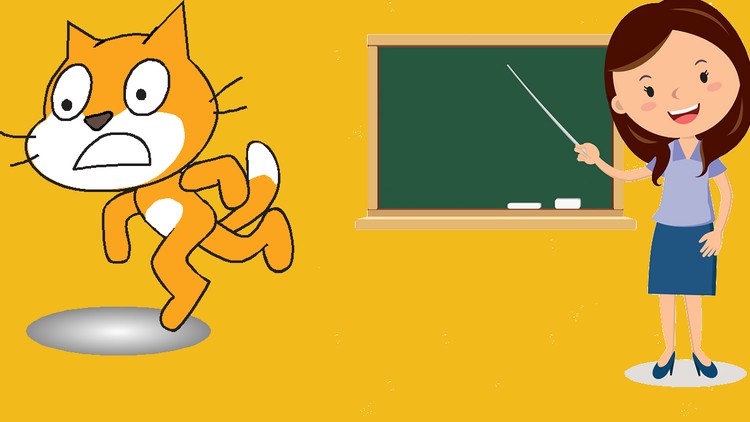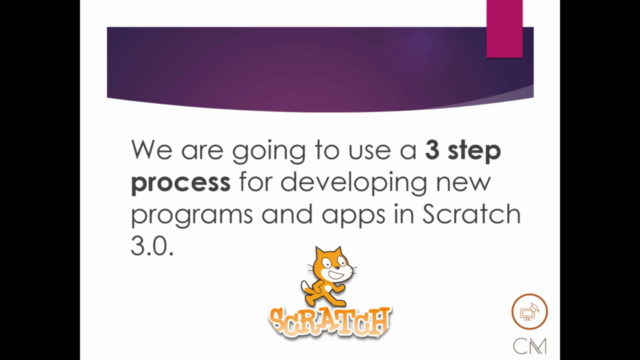Scratch 3.0 for Teachers | Teach Coding with Games & Scratch

Why take this course?
🚀 Scratch 3.0 for Teachers: Teach Coding with Games! 🎮
Course Instructor: Dr. Chris Mall • 30,000+ Students Worldwide
Course Title: Scratch 3.0 for Teachers | Teach Coding with Games & Scratch 🎉
Are you a teacher eager to bridge the gap between Scratch 3.0 and real coding principles? Look no further! This course is meticulously designed for educators who want to explore game development in Scratch 3.0 and integrate these skills into their classroom teaching. We provide comprehensive lesson plans and activities, ready to engage your students in a meaningful learning experience. 🏫➡️💻
What You'll Learn:
- 14+ Games: Develop over 14 engaging games, including the ever-popular Arcade Arkanoid Game, using Scratch 3.0's intuitive interface.
- Educational Approach: Learn how to teach coding principles through game development, making learning both fun and educational for your students.
- Scratch 3.0 Mastery: Understand the ins and outs of Scratch 3.0, an award-winning programming language from MIT that's perfect for young minds.
- Interactive Learning: Discover how to create interactive stories, games, and animations that captivate your students' interest and encourage deeper learning in computing.
Course Highlights:
- Fun and Exciting: Engage your students with coding through the enjoyment of game development.
- Educational Impact: Motivate your students to explore STEM subjects further.
- Real Coding Skills: Prepare your students for real-world programming by teaching them the fundamental concepts in a playful manner.
- Community Projects: Collaborate with other educators and contribute to the global Scratch community.
Why Choose This Course?
- Educational Foundation: Scratch was developed by MIT to help children (ages 8 and up) learn to code in a fun and interactive way. It's the best educational programming software for kids today!
- Professional Development: If you're interested in teaching beginning programming as a career or business, this course is your stepping stone.
- Versatility for All: Whether you're a beginner or an experienced coder, Scratch offers a fun and rewarding platform to expand your skills or introduce coding concepts to others.
What's Inside the Course:
- Step-by-Step Instructions: Detailed lessons that guide you through the process of creating games in Scratch 3.0.
- Lesson Plans & Activities: Ready-to-use educational materials for teaching coding in your classroom.
- Supportive Community: Join a community of educators and learners, share projects, and gain support from fellow Scratch enthusiasts.
- Lifelong Skills: Equip yourself and your students with skills that will last a lifetime and open doors to future opportunities in technology.
👨🏫👩🏫 Dive into the world of coding with fun and education at its core! Enroll now and transform the way you teach with Scratch 3.0. Let's make learning to code as exciting as playing a game! 🎓🎉
Course Gallery




Loading charts...
Comidoc Review
Our Verdict
Scratch 3.0 for Teachers offers an engaging and fun way to introduce Scratch 3.0 and its game development capabilities to educators seeking innovative methods for teaching coding principles. The course could, however, benefit from restructuring and better alignment of advanced topics to suit the progression of skills in a classroom setting.
What We Liked
- Comprehensive course for Scratch 3.0 environment exploration with 11 games as practical examples
- Well-structured lessons that strike a balance between being concise and informative, easy to follow along
- Covers fundamental programming principles using game-based concepts, engaging and fun methodology
- Instructor's teaching style is praised for patience and clarity, making it accessible for beginners and children
Potential Drawbacks
- Theoretical sections on advanced topics may seem out of place and are too complex following Scratch 3.0
- Lacks a clear introduction to the Scratch 3.0 interface, assuming some prior knowledge from learners
- Several reviewers noted a lack of coherence in the curriculum, suggesting it may require adjustments for classroom use